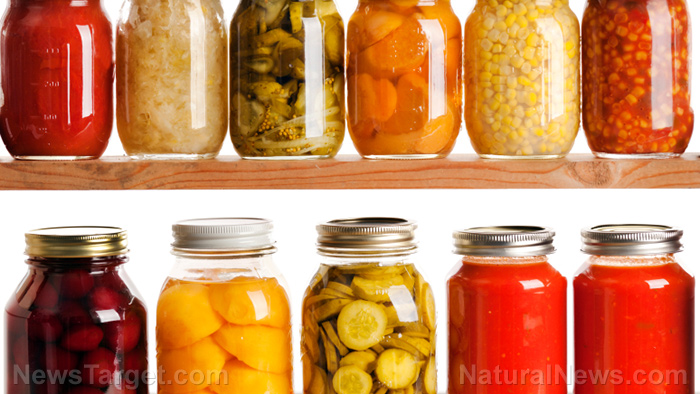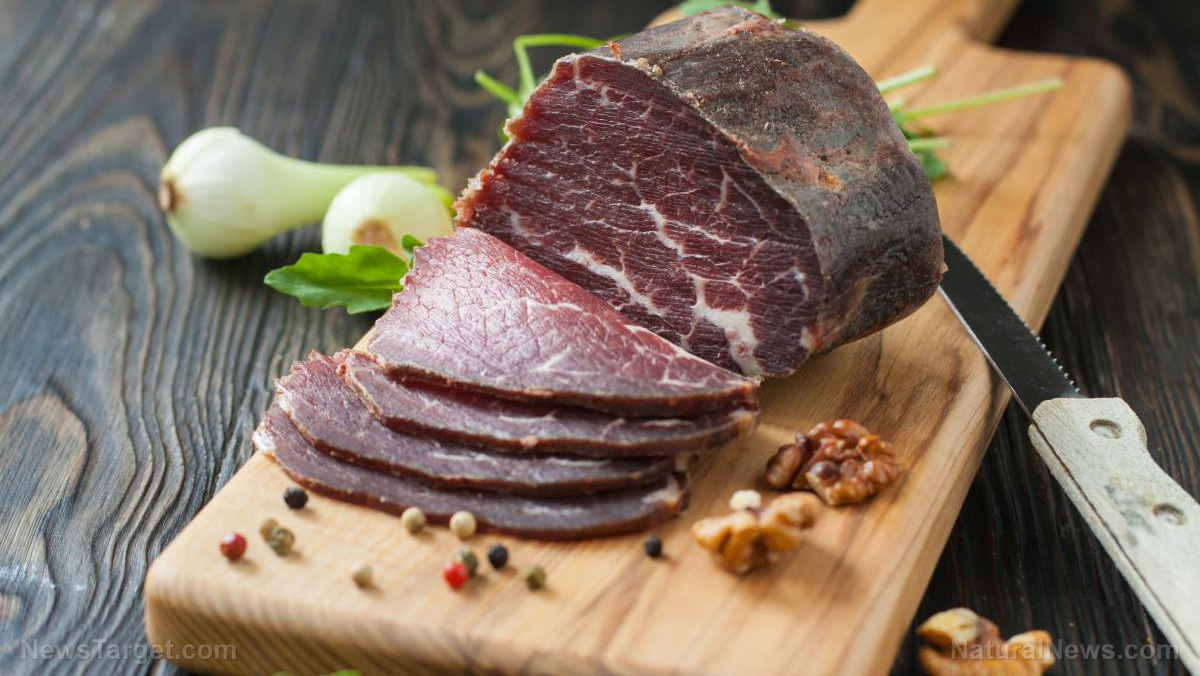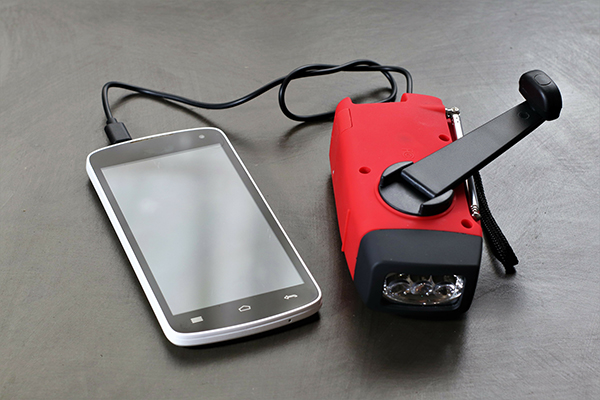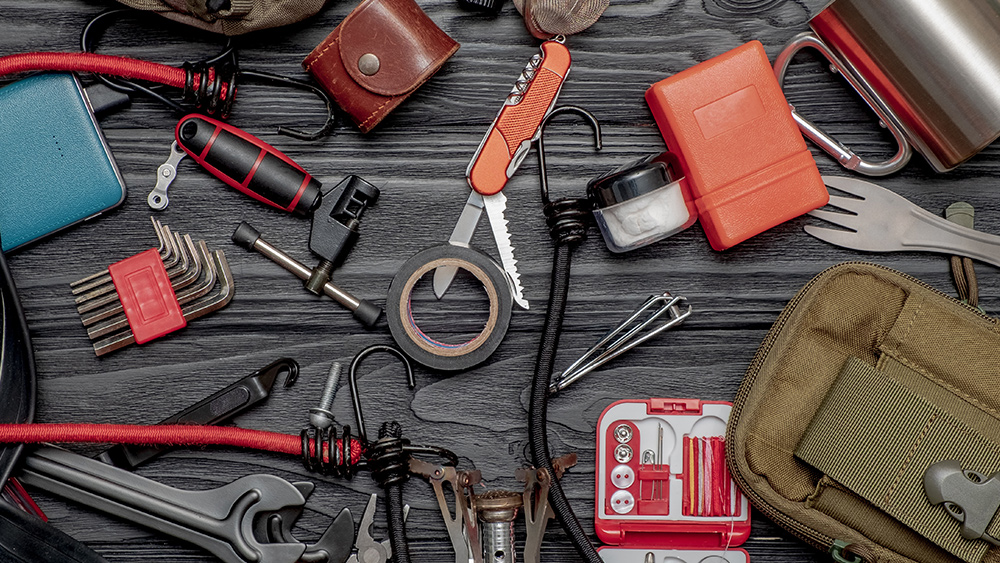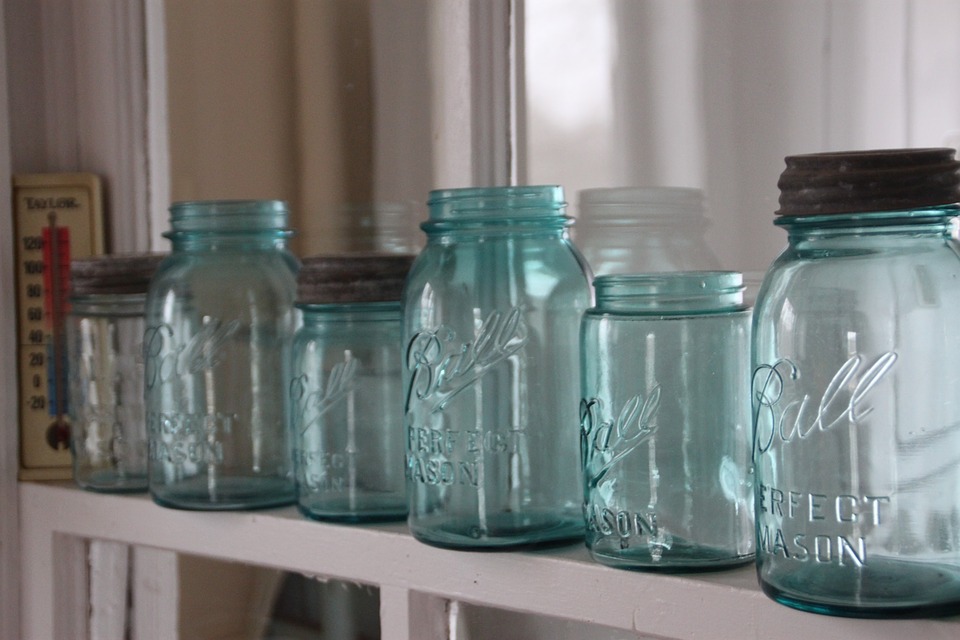Essential items you need to begin your homesteading journey
02/01/2023 / By Olivia Cook

Homesteading is a lifestyle of self-sufficiency that may involve home gardening, home preservation of food and even small-scale production of food like bread for your family or for sale.
Here are some essential items you need to begin your homesteading journey:
Wheelbarrows
You’ll definitely need the means to haul dirt, gravel, big rocks, wood, firewood, yard and garden waste, game animals or an injured member of your household. Make sure your wheelbarrow or yard cart is sturdy and can bear a heavy load.
Shovels
There are many kinds of shovels and it’s a good idea to own several of them for specific uses – edging shovel, trench shovel, flat shovel, tree-planting shovel, power shovel, post hole shovel, root shovel, scoop shovel, snow shovel, pointed or round digger shovel and folding portable shovels. Get good ones with an ergonomic grip or a fiberglass handle.
Post pounders
Also known as post drivers, post rammers, post knockers or fence drivers, they’re used for driving fence posts and similar items into land surfaces. They’re normally used by one person, but larger versions may require two people.
T-posts
These are rail steel fence posts used to support wire fencing. They’re also known as Y-posts because of their shape and have an anchor at the bottom that helps them stay on the ground.
Chainsaw
Choose according to your homestead’s vegetation and fuel preferences. Tougher jobs require longer blades, while shorter blades allow efficient and nimble execution of smaller, common tasks.
Buckets
Five-gallon buckets are essential tools, whether you’re into homesteading preparedness or permaculture. They’re the absolute favorite tools on the homestead because they have more than one alternative use or purpose, they nest neatly into a tidy stack and they’re inexpensive. You can acquire them for free from your grocery store’s bakery department or hamburger joints, restaurants or car washes. All you have to do is ask nicely for the buckets, but be prepared to clean them.
Gloves
Get gloves that cover and protect your hands and serve specific functions. Some examples are gardening gloves, rubber-insulated gloves, leather protector gloves and lineman work gloves.
Boots and socks
Get sturdy closed shoes, such as safety Pac boots, chore boots or loggers steel toes insulated boots when working in icy conditions. Pair these with socks to keep your feet warm and to provide a certain amount of protection for your feet against blistering.
Safety glasses
Use safety glasses when mowing, weed eating, sawing lumber, grinding metal, sanding lumber, grinding metal and DIY home projects like soap-making. It is also important to get yourself a good pair of sunglasses to protect your eyes from prolonged or direct exposure to ultraviolet (UV) radiation from the sun no matter what season it is.
Block and tackle or a come along winch
A block and tackle (consisting of two pulleys or blocks with rope or cable threaded through them) is a traditional tool in use for 2,000 years and is still use today to pull and lift heavy objects. A more commonly used tool designed for pulling is the come along winch and cable puller, which is available in various capacities.
Pry bars
These are simple steel bars with one end chiseled flat typically used as levers. If you buy a pry bar, paint the top end bright orange or apply some bright tape as they can be easy to lose in the bush.
Hydraulic jack
Also called “bottle jacks,” these compact jacks are available in different capacities. They are small and light enough to easily move to a work site yet have the needed potential to lift and help move very heavy objects.
Mattock
This is a versatile, two-sided tool that can be very indispensable for many homesteading chores. The blade side of a mattock is ideal for rough landscaping, smoothing the uneven ground, levering up heavy items like logs or rocks or chopping out hard-to-move shrubs and large plants. The pick (pointed) end is ideal for breaking into new hard ground and for levering up subsoil rocks and boulders.
Tweezers
A good splinter can stop you in your tracks when trying to get a job done, so get several quality tweezers and always keep one in your pocket when doing carpentry work, stacking firewood, moving lumber and especially when handling plywood.
Toolbox and toolbelt
Toolbelts eliminate the back-and-forth trips from your toolboxes to your projects and these typically have various-sized pockets that keep you organized by accommodating a range of tools that are accessible right at your hip. (Related: Essential homesteading skills for self-sufficiency.)

Pruning shears and loppers
You want to equip yourself with a set of sturdy pruning shears for a clean cut and snip at the nodes of your plants. Once your garden matures, you can invest in a set of loppers designed for branches two inches or wider.
Garden rakes
Garden rakes typically have a long handle made of wood with uniform metal tines that are sturdier than leaf rakes, which allow you to easily create smooth, level soil while removing unwanted weeds.
Canner and canning supplies
You’ll need a pressure canner and canning supplies like Mason jars, lids, rings and items to measure as well as ingredients for canning recipes. Also known as a canning or fruit jar, a real Mason jar has a wider rim that gives them a better sealing surface and is better made than regular jars so it can resist cracking and breaking under the high pressure that is necessary for canning. (Related: Homesteading 101: 8 ways to preserve medicinal herbs.)
Loaf tins and bread pans
If you’re making your own bread, then you’re going to need a few pans and tins in which to make them.
Flour-sack towels
Use flour-sack towels instead of paper towels to reduce paper and plastic waste.
Headwear
Hats that stand by you in the glaring sun or during rain while working outdoors and caps that cover your ears, fit firmly on your head, but not too tight that they leave an indent when you take them off.
Neck gaiters
These are best described as tubes of fabrics meant to protect your face and neck from the sun, bugs, wind or other conditions.
Tops
These include long-sleeved shirts made of natural fabrics like wool and linen since they are durable and easy to care for, t-shirts, light button-ups and jackets that must be large enough to fit over layers of clothing during winter but sufficiently close-fitting so you can maneuver your chores with ease and comfort.
Long pants and overalls
Invest in heavy-duty jeans that are sturdy enough to shield your legs from the elements and overalls that cover both the upper and lower parts of your body and are loose enough to be worn over other clothes to protect them.
More related stories can be found at Homesteading.news.
Watch this video about five vital homesteading tools.
This video is from the SHTFprepping 101 channel on Brighteon.com.
More related stories:
24 important homesteading skills to learn before SHTF.
10 homesteading tips and tricks for the all-around homesteader.
Living simply and frugally is key: Homesteading on a limited income.
Sources include:
Submit a correction >>
Tagged Under:
Gear, homesteading, off grid, preparedness, prepper, prepping, self sufficiency, self-reliance, survival, survival gear, tips
This article may contain statements that reflect the opinion of the author
Get independent news alerts on natural cures, food lab tests, cannabis medicine, science, robotics, drones, privacy and more from NewsTarget.com
Get independent news alerts on natural cures, food lab tests, cannabis medicine, science, robotics, drones, privacy and more from NewsTarget.com
RECENT NEWS & ARTICLES
COPYRIGHT © 2017 · SURVIVAL NEWS





